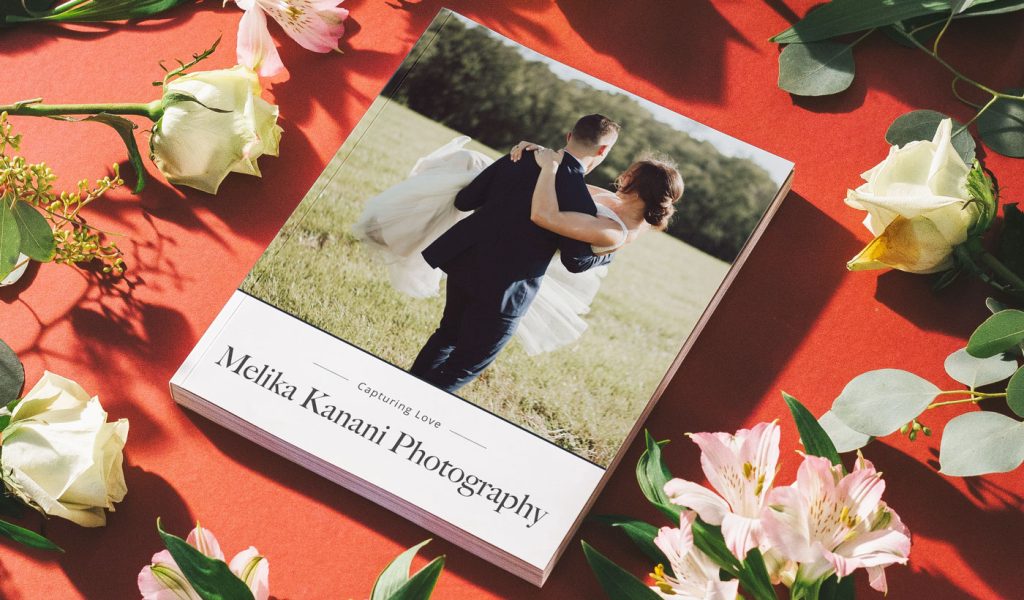Hit the Books with Dan Milnor: Designing Books for Clients
At one point in my life, I made my living as a wedding photographer. This might not seem like a big deal to you, but for me, coming from a background in photojournalism, it was quite the departure. Keeping with the Milnor tradition, I never quite fit in the wedding world. I didn’t use digital cameras, I preferred to work alone, and my main camera system was a 50-year-old, mechanical, square-format beast considered by most sensible people as being far too slow for wedding work. The film camera I used only allowed for 12 images per roll, so my timing and reload had to be perfect. The stress reminded me of photojournalism, so in some ways, weddings were a good fit.
Weddings are synonymous with wedding albums. Large, leather-bound, and costly could accurately describe these publications. Historical and traditional would also fit. Based on my style of work, these behemoths felt too classic, too slow, and not contemporary enough. So, I began to build books that felt more me: magazine-esque, softcover, with editorial layouts and type treatment.
Instead of the largest trim size, I went in the other direction, making smaller 5×8 or 6×9 softcover diaries with maximum page counts. Clients could get dozens of these photo books for the price of one old-style album. So instead of just the couple having a printed keepsake, anyone at the wedding could buy a copy. And they did!
The look and feel of these smaller, book-style versus album-style publications were on point with my look and feel as a photographer. Clients often thought that the photographer’s role was to simply show up and shoot, but for me, there was much more to it than that. I would control as much as I possibly could to put myself in the best position. If I could control the time of the ceremony so that we had the best light, I would. If I could cut the group shot time in half, I would.

I also made it expressly clear to the clients that just showing up to shoot was not what they were hiring me for. They were also hiring me to edit and sequence the photography and design the books.
Most wedding clients don’t spend their days editing photography, sequencing photography, or thinking about page design. Photographers do. My feeling was if I left the edit in the hands of the client, they would immediately be overwhelmed by the volume of images and the task of effectively telling the visual story of the day. That was my job. And I needed to have my work represented in the best way possible so that I would continue to find clients.
After leaving the wedding world, I continued my photographic journey for many more years. Designing books became an integral part of my business. Most jobs I completed ended in book form. Over 120 completed projects and books, in fact.
Once clients realized I could produce something tangible, they just said, “Do it.” Having me produce the photography and the printed pieces came with a sense of relief from the client because, again, they may or may not have been confident in doing it themselves.
The books I designed for clients also became a solid additional revenue stream. Clients would often buy extra copies of my books and send them to their clients. All these publications were branded with my studio name and my contact information, so essentially, the clients were paying for my marketing. I walked into the offices of potential clients and saw my books sitting on their coffee tables, even before I had worked with them.
At the foundation of this story is the love and promise of print. Print lasts. It is almost confrontational because when you are holding and flipping through a book, you are giving one hundred percent of your undivided attention—something at a premium these days. Books also live on for the children and the children’s children, passing from hand to hand through the generations, reflecting a time and place, a rite of passage, or a ritual of human existence.

How you can market with client books
To make this strategy a part of both your business and your bookmaking, there are several things I can suggest.
Build books into your shoots
Explain that in addition to whatever other image needs there are, your goal is for the shoot to end in book form. From there, make sure the client knows there is no extra work on their end. You will handle the edit, the sequence, and the design. Engaged clients, once they learn how seamless the bookmaking process is, will often want to get more involved. This is a good thing.
Add books to your budget
Another helpful tip is to build the book design into the budget from the beginning. A client may balk if they see an additional fee at the end, but when they see a beautiful publication arrive post-shoot, without having to endure a perceived additional fee, it makes the experience more enjoyable.
Brand your client book
Finally, brand it. It is, after all, your work—and your publication—even if the contents were based on professional collaboration. My experience is that clients will often express a sense of relief upon seeing the book or magazine. Clients are often so busy it may or may not be possible for them to accomplish the same thing, at least not in a condensed time frame.
In a best-case scenario, the client sees the book design, loves it, and then asks for co-branded copies, sending those copies, and your work, on to their customers.
***
Ready to build a book for your clients? Blurb can help with print-on-demand, pro-quality books. Learn more about what you can do with photo books now.

